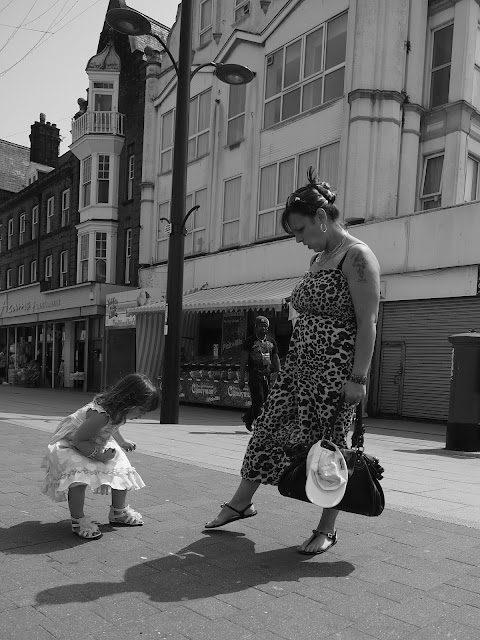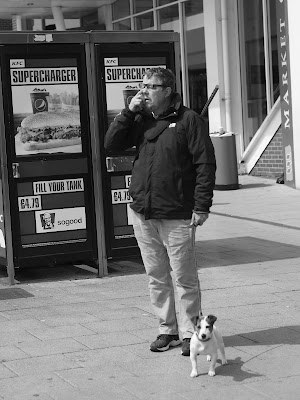Anybody living in England will know that there has been a deluge of biblical proportions here for about 3 weeks now so opportunities to go out with a non-weatherproof camera have been limited.
Still, I did manage to get out for a couple of hours at the weekend and get some practice in with the new gear. I live just outside the seaside resort of Great Yarmouth and when it's off-season like it is now we really need decent weather to bring the tourists in for the weekend. Needless to say, this past weekend was very, very quiet. This limited my subject matter and whilst I did manage to take a number of shots I found that when I got home and put them on the computer there were no 'keepers' amongst them. I can blame it partly on my unfamiliarity with the equipment, partly on my own ineptitude and a considerable amount on my lack of confidence and experience at Street Photography. As someone who is happy to melt into the background on any occasion I still felt very conspicuous in my endeavours, although towards the end of this first session I could feel a little bit of confidence starting to develop.
To train myself for the next session I reprised the YouTube videos of street photographers I'd watched previously and these helped. Observing how others deal with the situations that arise with their subjects and how they communicate with strangers is priceless and I would recommend it to all the other novices out there.
It seems to me that there are 3 main ways to photograph strangers in public spaces.
Firstly, you can ask their permission and a 'yes' gives you a happy and relaxed subject who will probably allow you to take a number of shots which should be well focused and composed. The main drawback is that they will be showing you what they want you to see, rather than the way that they really are. However, if taking profile pictures of interesting faces is your thing then why not.
Second, you can take the picture and then interact with them afterwards. I don't personally like this approach as it confirms what they suspected; that you took their picture and provides them with the opportunity to object. This approach might suit your personality but not mine.
Third is my preferred option - just take the shot and avoid eye contact. The subject is unlikely to be sure you took their picture, unless you're Bruce Gilden and just aimed a flash in their face, and you can move straight past and look for the next shot. To me, this is the easiest technique to learn and eventually master although I wouldn't discount using the other methods as my confidence grows.
Armed with all this new knowledge I ventured out again today and I was far more successful.
I found it far easier to point and shoot, albeit at a very 'safe' distance to begin with but as time passed by I became more and more comfortable with the equipment and what I was supposed to be doing. Some people I've read talk about being "in the zone" and I think I could feel what they are talking about. After a while walking around you find a rhythm of walking and seeing and shooting which becomes almost automatic. I started to get closer to my subject and became almost oblivious to the people around me. I wasn't in-your-face close but I stopped feeling conspicuous and relaxed.
Today, I bagged some keepers. They're probably not going to win any prizes but it's a start and something to build on and I'll probably upload a few for peer review and criticism (constructive I hope) on the photo sites and on here.























































